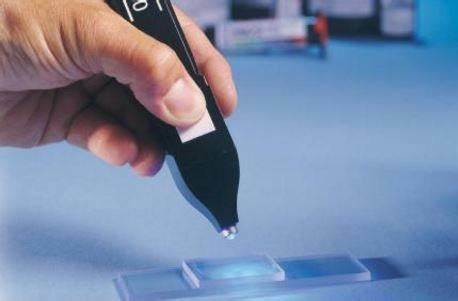The following companies as the key players in the global curing adhesives market—are Shin-Etsu Chemical Co., Ltd (Japan), DELO (Germany), H.B. Fuller (US), Sika AG (Switzerland), Dow (US), Dymax (US), Wacker Chemie AG (Germany), Henkel AG & Co. KGaA (Germany),3M (US), Tosoh Corporation (Japan), Bostik (France), and Permabond LLC (UK)among others.
Market Highlights
The global Curing Adhesives market is projected to be valued at USD 10,795.8 million by the end of 2028, registering a CAGR of 7.76%during the forecast period.
Curing is a chemical process in which the adhesive completely crystallizes. The adhesive attains its final properties, which helps it build final strength. They provide high strength, flexible to rigid bond lines that resist temperature, humidity, and many chemicals.
The growth of the global market is primarily driven by increasing applications of curing adhesives in the electronics industry. In addition, growing production and sales of automobiles are also expected to fuel the global market growth. Furthermore, the growing technological dominance & demand from the Asia-Pacific and other regions are likely to offer immense growth opportunities for the market players. However, stringent regulatory scenarios are expected to hamper the growth of the global curing adhesives market in the coming years.

The global pandemic of the novel coronavirus has led to a tight supply of the products primarily due to the reduced operating capacities and closed production plants globally. The restrictions on logistics, travel, and one-on-one meetings across the borders, along with lockdown and curfews within the states or country to limit the spread of the coronavirus,have negatively impacted during adhesives production due to the disruption in the supply chain across the globe.Moreover, the producers are facing issues due to the disruptions in raw material supply and fluctuations in its prices. Moreover, the companies are working aggressively towards safeguarding their employees’ well-being and health and supporting government goals of upholding critical business activities such as food production, power generation, and healthcare.
Although the manufacturers have seen a decline in their revenue, some companies have reached new growth rates. For instance, in April 2021, Sika AG acquired Hamatite, the adhesives business of The Yokohama Rubber Co., Ltd. in Japan, which offers adhesives and sealants to the automotive and construction industries. The acquisition will significantly strengthen Sika’s market position in Japan, increase market access to all major Japanese OEMs. The companies are also developing and providing the market with new products. For instance, in February 2021, WACKER has launched the ELASTOSIL eco brand in Europe. Likewise, in April 2021, H.B. Fuller has introduced two compostable adhesive solutions for the flexible packaging market.
Furthermore, with the ease of lockdowns in various regions, manufacturers are now coping up and are managing to fulfill customers’ requirements at a similar level as the pre-COVID era.
Segment Analysis
The global curing adhesives market has been segmented on the basis of type, application, end use, and region.
Based on resin, the global curing adhesives market has been segmented into epoxy, polyurethane, acrylate, silicone, and others. The acrylate resin segment was valued at over USD 2,000 million in 2020 owing to its widespread use in p production of pressure-sensitive tapes. Acrylate adhesives comprise acrylic or methacrylic polymers. These adhesives are highly preferred in outdoor application settings owing to their ability to withstand various environmental factors such as ultraviolet (UV) radiation, ozone, and moisture, among others. The growing use of pressure sensitive tapes in the automotive, solar energy, furniture making, and electrical & electronics industries is expected to drive the segment growth over the forecast period.
Based on product type, the global curing adhesives market has been segmented into UV cure, moisture cure, and heat/ thermal cure. The moisture cure segment is expected to dominate the market and register a CAGR of around 7.5% during the review period owing to their wide-ranging use in the building & construction industry. Moisture cure adhesives react with moisture in the air or the underlying substrate to cure. They are generally used for difficult-to-bond surfaces metals, wood materials, and a wide range of plastics that do not contain polyethylene or polypropylene. The construction industry has emerged as one of the leading users of moisture cure adhesives.
Based on application, the global curing adhesives market has been bifurcated into electronics & electricals, and others. Curing adhesives play an important role in the electronics & electrical industry. They played a key role in reducing the overall weight and miniaturization of various electronics. Curing adhesives have successfully replaced traditional soldiering systems and fasteners in producing various electronics goods such as mobile phones, computers, and consumer durables. The electronics & electrical segment is further segmented into consumer electronics, automotive electronics, industrial electronics, and others. The consumer electronics segment was valued at over USD 800 million in 2020 due to the wide-ranging adoption of curable adhesives in producing various consumer electronics items such as smartphones, tablets, personal laptops, smartwatches, and earphones, among others. The automotive electronics segment is expected to grow at a CAGR of around 8.0%, owing to the growing adoption of curable adhesives to replace traditional fastening systems.
Key Findings of the Study:
-
- The global Curing Adhesives market is projected to reach a value of USD 10,795.8millionby 2028,with a CAGR of around 7.76%during the forecast period of 2021–2028.
-
- Asia-Pacific accounted for the largest market share in 2020. This is due to the presence of major end users in the region, such as India, China, Thailand, and Indonesia.
-
- Asia-Pacific is expected to be the fastest-growing regional market due to the high availability of electronic manufacturers and the low cost of raw materials, low-cost labor, rapid industrialization, and commercialization in the region, especially with the growth of the consumer electronics sector.
-
- The market in the Europe region is the second-fastest-growing market owing to the expanding automotive electronics base along with other end uses.
